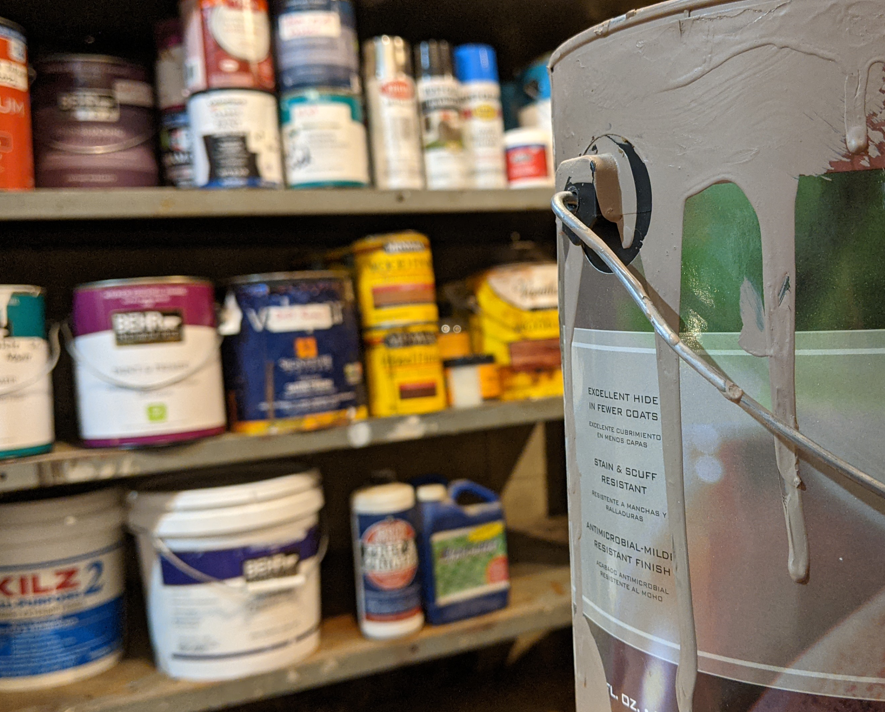When it comes to leftover food, we all know how to use refrigerators and microwaves so that it can be consumed at a later time. In the case of leftover paint, the best practices are not quite so well known. How should you store extra paint? And how long does interior house paint last in storage?
When properly stored, most latex paints should last at least two years, and if they are well sealed, they could even last up to 10! Oil-based interior house paints can last 15 years.
How Do You Know if Interior Paint Has Gone Bad?
There are two ways in which paint can become unusable. One is when it begins to dry out. You may get a film over the top of the paint, or bits of hard, dry paint from the interior of the paint can. The paint is no longer smooth, no matter how much you stir it, and it is best not to try using it again.
Bacteria can also ruin interior house paint. You might notice a harsh smell when you open the can, or see physical changes in the nature of the paint, such as unusual thickness or complete separation of the different liquid components. When the contents of the can are in this condition, it is best not to use them for interior house painting.
How To Store Interior Paint to Prevent Spoiling
When your interior painting project is finished and you have extra house paint, the natural choice is to store the paint in the can it came in. However, with a couple extra tips, this storage can become much more successful:
- Use a rag or a paintbrush to clean out all the paint from inside the rim of the can. This will help it seal better, and also prevent the paint in the rim from drying out and gluing the lid on, or falling in chunks into the can when you open it.
- Use a rubber mallet to gently tap around the perimeter of the lid as you close it. This will seal the lid firmly, without denting or deforming the paint can.
- If enough paint has been used that there is a significant amount of air in the can, use a plastic bag or cling wrap to create a film on the surface of the paint. The edges of the plastic can come up the sides of the paint can, and even over the edges. The paint can lid should still seal fine. This prevents air exposure to the paint, slowing any drying or bacteria.
Another idea is to pour your extra interior paint into another type of container. This could be an old yogurt container, a pickle jar, a water bottle, or anything with a tightly-sealing lid. Just make sure the container is thoroughly cleaned beforehand, and use a funnel to pour it in, if necessary. Try to choose your container based on the amount of paint you have left, again to limit the amount of air exposure.
Cherry Hill Painting
If you have additional questions about interior house painting, Cherry Hill Painting would be happy to help! We specialize in all kinds of house painting services, including interior and exterior painting, plus kitchen cabinet refinishing, wallpaper removal, and more!
Cherry Hill Painting has been serving New Jersey and the Philadelphia region since 1968, combining expert craftsmanship and excellent customer service. For your free estimate for house painting, call our office today – we look forward to meeting you!

